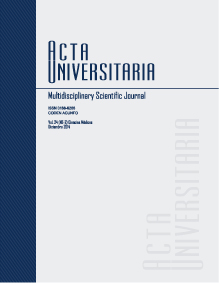Biofilm formation in the pathogenic fungus Sporothrix schenckii: development, architecture and biochemical characteristics
Published 2015-01-12
Keywords
- Esporotricosis,
- Sporothrix schenckii,
- biopelícula.
- Sporotrichosis,
- Sporothrix schenckii,
- biofilm.
How to Cite
Abstract
Fungal infections of the human being are associated to the formation of biofilms, which are resistant to antifungal drug therapy. The complex of S. schenckii presents chronic and systemic mycoses with antifungal resistance. However, in S. schenckii the biofilm formation has not been described, this issue is addressed in the present research, analyzing the biochemical characteristics of the formation and development of biofilms, using optical microscopy and physicochemical methods. The results indicate that the adhesion and development of the fungal community is time dependent (12 h, 24 h and 48 h). The results indicate that the adhesion and development of the fungal community is time dependent (12 h, 24 h and 48 h), thereby increasing the biomass (0.19 Abs to 0.5 Abs) and total carbohydrates (1.12 μg/μl - 3.28 μg/μl) occurs. When adhesion and development takes place, S. schenckii has hyphae networks with nucleation centers that consolidate the biofilm structurally. Prospective study of biofilms of S. schenckii impact in the pharmacological treatment strategies of fungal infections.

